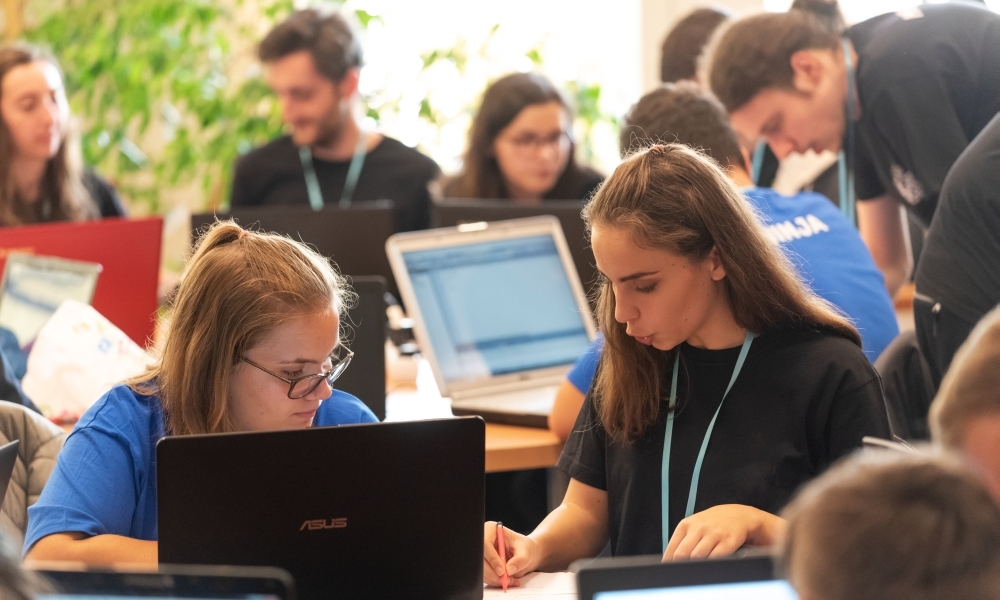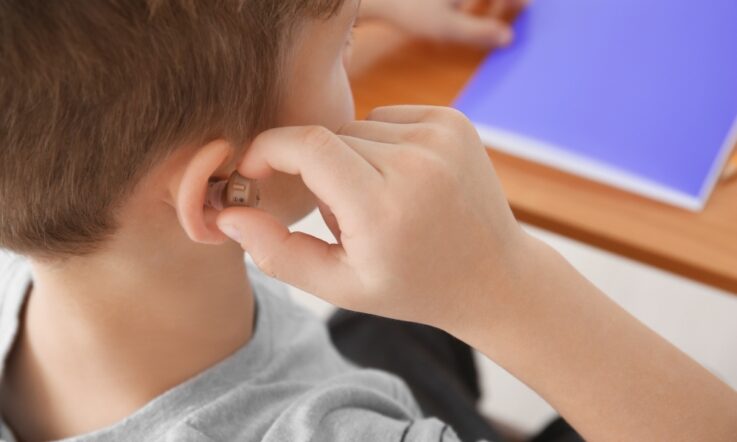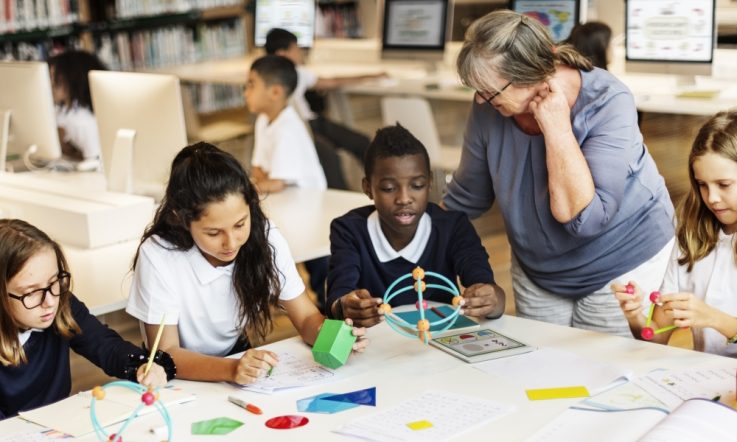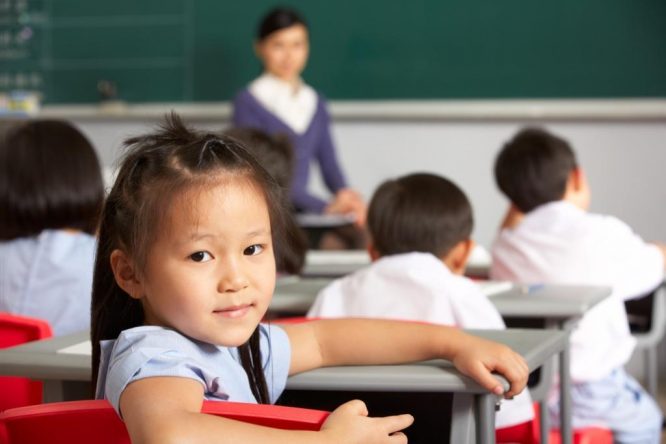In yesterday’s reader submission, Gifted and Talented Coordinator Michelle Lucas looked at some of the misconceptions around gifted and high-achieving students. In this follow-up article she shares research and interventions to address underachievement and meet the needs of gifted students.
In my first article I discussed the high rate of underachievement among gifted students and the detrimental effects of teacher misconceptions and the myth that they will succeed regardless. Here are four key interventions shown to be highly effective in addressing underachievement and catering to the needs of gifted students.
Knowing the students and their needs
The starting point is to successfully identify your gifted students. This identification must include considerations for the inclusion of under-represented sub-groups. Once identified, it is important to understand each student – identifying strengths and weaknesses and assessing their needs. Research supports the use of interviews and surveys to understand students (McCoach & Siegle, 2003).
Providing daily challenge
Since many gifted students have already mastered as much as 40-50 per cent of the regular curriculum (Reis & Renzulli, 2012) and also learn at a fast pace (Imbeau, 2018), a significantly differentiated curriculum is required. Withdrawal programs offering enrichment have been shown to have positive effects (Little, 2012), but are only a part-time provision and may not arrest boredom in the regular classroom (Rogers, 2007).
Acceleration is a favourable alternative, either in the form of subject acceleration or grade-skipping (Callahan & Plucker, 2013). Both forms of acceleration commonly include some curriculum compacting or telescoping to minimise gaps in skills and knowledge outcomes (Rogers, 2015).
The effectiveness of acceleration to boost achievement is well-documented (Assouline et al., 2018; Gross, 2006) and acceleration programs have been well-received by parents in the Australian context (Dare et al., 2016). There have been some concerns that acceleration could have a negative social impact on gifted students, however, research evidence has shown no such effect (Assouline et al., 2018; Rogers, 2015). On the contrary, accelerated students have been shown to have increased engagement, positive self-concept, higher motivation and ambition, and have been found to be well-adjusted later in life (Rogers, 2007 & 2015).
Creating safe environments and a sense of belonging
In order to create a supportive learning environment for gifted students it is important that teachers have some knowledge and experience of gifted students and that misconceptions are addressed. From my own experience, I can’t help thinking of a teacher’s response to an invisible underachiever – ‘he couldn’t possibly be gifted’ – and also wonder at their opinion of the identified underachievers.
Negative teacher attitudes can be a confirmation of student’s own self-evaluations (Rimm et al., 2018), and include low expectations of gifted students which are strongly tied to achievement and motivation (Cohen et al., 2000). The best way to address misconceptions is through effective professional development, collaborative work to develop a shared understanding, and communication to engage teachers with research literature and important aspects of gifted education. Research identifies engagement with research, years of teaching experience, and professional development in gifted education as favourable factors to improve teacher attitudes and expectations (McCoach & Siegle, 2007).
I recall the low-achieving gifted students from my own school who felt they had little in common with their age peers. Literature suggests that some gifted children have more in common with their mental peers (Steenbergen-Hu et al., 2016).
With this in mind, grouping high ability students together can help students build connections with those who may have more similar character traits. There may be some negative impact to student’s self-concept, often referred to as ‘Big Fish Little Pond’ syndrome (Fang et al., 2018), where students compare themselves unfavourably to other high potential learners. Recent research suggests these effects are short-term (Gross, 2006; Rosman et al., 2020), however, earlier studies reported long-term effects (Marsh, 1987). The negative effects have been shown to be much less significant for part-time and flexible grouping options (Card, 2015) and therefore it is recommended that vertical grouping of high ability students be used as a part-time provision to allow for social interaction and peer tutoring. This can be easily implemented with a lunchtime gathering or an after school club for gifted students, or more effectively embedded as a withdrawal program during timetabled classes.
Supporting socio-affective needs
Related to intervention three above, it is important to cater specifically to the socio-affective needs of gifted students, especially since there may be social skill deficits and asynchronous development among those identified (Cross & Coleman, 2014). Research evidence suggests direct social skills instruction in small groups run by the school counsellor is effective to address social and emotional development (Landy, 2002). Not only has this been shown to increase engagement and motivation, but also increase retention of students from diverse backgrounds (Ford et al., 2014). The literature supports embedding preventative counselling that caters to the unique needs of individual gifted students.
Another provision is mentoring. This can be used to provide extension and enrichment as well as for social and emotional support and clarity of goals and purpose. Research has found this intervention to be especially effective for underachieving gifted students with disadvantage (Rimm et al., 2018). Mentors could be teachers, parents or professionals, however, mentors with experience in a student’s talent area are especially useful to extend students and provide relevance for their learning (Bowen & Shume, 2018). Professional mentors can also provide access to higher level outcomes and are an effective means of developing innovation capabilities (Burns et al., 2018).
References
Assouline, S. G., Lupkowski-Shoplik, A., & Colangelo, N. (2018). Acceleration and the talent search model: Transforming the school culture. In S. I. Pfeiffer, E. Shaunessy-Dedrick, & M. Foley-Nicpon (Eds.), APA handbook of giftedness and talent (p. 333–346). American Psychological Association. https://doi.org/10.1037/0000038-022
Bowen, B., & Shume, T. (2018). Educators in industry: An exploratory study to determine how teacher externships influence K-12 classroom practices. Journal of STEM Education: Innovations and Research, 19(1), 57-62.
Burns, C., Chopra, S., Shelley, M., & Mosher, G. (2018). Utilizing multivariate analysis for assessing student learning through effective college-industry partnerships. Journal of STEM Education: Innovations and Research, 19(3), 27-32.
Card, N. A. (2015). Applied meta-analysis for social science research. Guilford Publications.
Callahan, C. M., & Plucker, J. (2013). Critical issues and practices in gifted education: What the research says. Sourcebooks.
Cohen, L. M., Ambrose, D., & Powell, W. N. (2000). Conceptual foundations and theoretical lenses for the diversity of giftedness and talent. In K. A. Heller, F. J. Monks, R. J. Sternberg, & R. F. Subotnik (Eds.), International Handbook of Giftedness and Talent. Second Edition (pp. 331-344). Elsevier Science.
Cross, T. L., & Coleman, L. J. (2014). School-based conception of giftedness. Journal for the Education of the Gifted, 37(1), 94-103. https://doi.org/10.1177/0162353214521522
Dare, L., Smith, S., & Nowicki, E. (2016). Parents' experiences with their children's grade-based acceleration: Struggles, successes, and subsequent needs. Australasian Journal of Gifted Education, 25(2), 6-21.
Fang, J., Huang, X., Zhang, M., Huang, F., Li, Z., & Yuan, Q. (2018). The big-fish-little-pond effect on academic self-concept: A meta-analysis. Frontiers in Psychology, 9(1569). https://doi.org/10.3389/fpsyg.2018.01569
Ford, D. Y., Coleman, M. R., & Davis, J. L. (2014). Racially, ethnically, and linguistically different gifted and talented students. Gifted Child Today, 37(3), 133-134. doi:10.1177/1076217514533277
Gross, M. U. M. (2006). Exceptionally gifted children: Long-term outcomes of academic acceleration and nonacceleration. Journal for the Education of the Gifted, 29(4), 404-429. https://doi.org/10.4219/jeg-2006-247
Imbeau, M. B. (2018). Evidence-based curricular/instructional suggestions for meeting the needs of all learners including those who are advanced. Gifted Child Today, 41(1), 5-6. http://dx.doi.org/10.1177/1076217517735904
Landy, L. (2002). Child support: Through small group counseling: Kidsrights.
Little, C. A. (2012). Curriculum as motivation for gifted students. Psychology in the Schools, 49(7), 695-705. https://dx.doi.org/10.1002/pits.21621
Marsh, H. W. (1987). The big-fish-little-pond effect on academic self-concept. Journal of Educational Psychology, 79(3), 280.
McCoach, D. B., & Siegle, D. (2003). The school attitude assessment survey-revised: A new instrument to identify academically able students who underachieve. Educational and Psychological Measurement, 63(3), 414-429. https://dx.doi.org/10.1177/0013164403063003005
McCoach, D. B., & Siegle, D. (2007). What predicts teachers' attitudes toward the gifted? The Gifted Child Quarterly, 51(3), 246-255. https://doi.org/10.1177%2F0016986207302719
Reis, S. M., & Renzulli, J. (2012). Challenging gifted and talented learners with a continuum of research- based interventions strategies. In M. A. Bray & T. J. Kehle (Eds.), The Oxford Handbook of School Psychology (pp.456-482). Oxford University Press.
Rimm, S. B., Siegle, D., & Davis, G. A. (2018). Education of the gifted and talented (7th ed.). pp 233-236. Pearson.
Rogers, K. B. (2007). Lessons learned about educating the gifted and talented: A synthesis of the research on educational practice. Gifted Child Quarterly, 51(4), 382-396. https://doi.org/10.1177/0016986207306324
Rogers, K. B. (2015). The academic, socialization, and psychological effects of acceleration: Research synthesis. In S. Assouline, N. Colangelo, J. VanTassel-Baska, A. Shoplik, & M. Gross (Eds.), A Nation Empowered. University of Iowa.
Rosman, T., Mayer, AK., Leichner, N., & Krampen, G. (2020). Putting big fish into a bigger pond: self-concept changes in psychology undergraduate entrants. Journal of Further and Higher Education, 44(1), 14-28. https://doi.org/10.1080/0309877X.2018.1493095
Steenbergen-Hu, S., Makel, M. C., & Olszewski-Kubilius, P. (2016). What one hundred years of research says about the effects of ability grouping and acceleration on K–12 students’ academic achievement: Findings of two second-order meta-analyses. Review of Educational Research, 86(4), 849-899. https://dx.doi.org/10.3102/0034654316675417
How do you identify gifted students in your own school? What strategies do you use to identify their strengths and areas for development?
In this article, Michelle Lucas discusses the benefits of mentoring, particularly for underachieving gifted students with disadvantage. Have you considered using mentors in your own context? Are there opportunities to work with experts from your local community?



